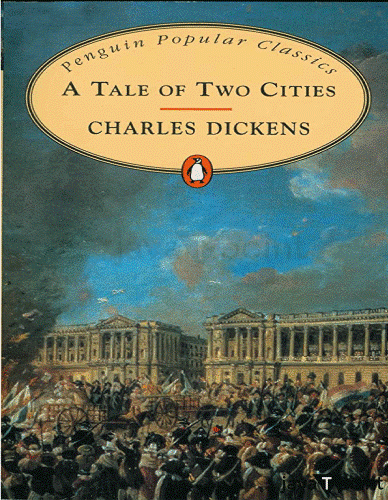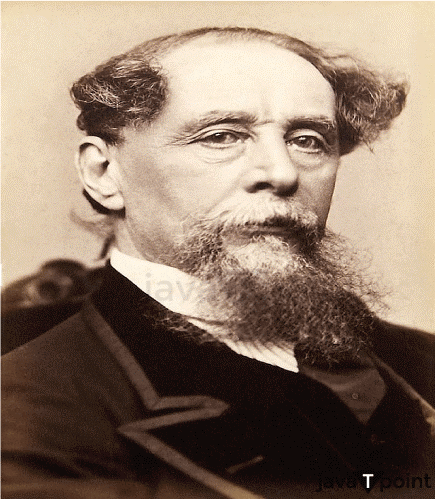A Tale of Two Cities by Charles Dickens Plot SummaryThe most well-known and even most significant work of historical fiction by Charles Dickens is A Tale of Two Cities (1859). Dickens' novels, set in London and Paris just before and during the French Revolution, claim to "treat some of the horrors of the French Revolution picturesquely." In addition to succeeding, Dickens gave his readers one of the most significant works of British literature to emerge from the nineteenth century. 
The book's title "has been reproduced in more than a million titles" in pop culture, other books, and articles. The strength of A Tale of Two Cities and the reason it is still relevant now is its ability to strike a balance between its captivating narrative and the history of the era in which it is set while also exposing to readers the fundamental character of the human condition. About the Writer Charles Dickens
On February 7, 1812, Charles Dickens was born at Landport, Portsmouth, England. He died in Gads Hill Place, England, on June 9, 1870. His three well-known plays are A Tale of Two Cities, No Thoroughfare, and The Frozen Deep. A Tale of Two Cities Summary
An English author, Charles Dickens, wrote the historical fiction book A Tale of Two Cities. In 1859, it was published. The plot, which is based on the French Revolution, spans a period of seventeen years, from 1775 to 1792. A Tellson's Bank employee, Jerry Cruncher, stopped the Dover mail coach in 1775 to deliver an urgent letter to Jarvis Lorry. It is where the narrative begins. Mr. Lorry is to be informed that a young woman will meet him at Dover, according to the word from Cruncher. Cruncher is addressed by Lorry, who replies, "Recalled to Life." The next day, Mr. Lorry meets with Lucie Manette because she has information on a piece of land that belonged to her father, who she believes passed away 18 years ago. Lucie is told by Lorry that, in contrast to what she thought, her father is alive and was held captive in France's Bastille. Lucie grew up believing her parents were lost forever because her mother died when she was two. The action then shifts to the impoverished Saint Antoine district of Paris. The proprietors, Monsieur and Madame Defarge are presented to us inside a wine store. Lorry and Lucie are also present, and Mr. Defarge shows them to a small room on the second floor where Lucie's father, Dr. Manette, lives. Dr. Manette is a man who has trouble speaking and spends all of his time creating shoes, a talent he picked up while being held in the Bastille. Although Lucie reminds Dr. Manette of his wife and is unaware of who she is. He needs to recognize his old friend Mr. Lorry. Lucie and Lorry get Dr. Manette out of Paris and move him to England. Charles Darnay meets Dr. Manette, who resumed his regular life a year later, in 1781, and permits him to marry his daughter Lucie. If Lucie accepts, Darnay promises to reveal his true identity. At the same time, Carton declares his love for Lucie and claims that even though he is poor and that his life is essentially meaningless, Lucie has inspired in Darnay the desire for a better and more meaningful living. Jerry Cruncher, a Tellson's Bank employee who also moonlights as a "Resurrection-Man," goes into the cemetery to take and sell Roger Cly's body because he had just disappeared. John Barsad, the other spy, visits the Defarge's wine store on the opposite hand. Barsad wants to gather proof of the revolution, which is still mostly under covers. Madame Defarge is knitting a secret registry in the store simultaneously, containing the names of everyone the revolution planned to put to death. Darnay exposes his identity to Manette in London the morning before the wedding, which causes him to revert to his previous behavior of producing shoes. He eventually comes to his senses and joins Charles and Lucie on their honeymoon after nine days. Sydney Carton visits Darnay to seek his friends after they get back from their honeymoon. Charles assures Sydney that no matter what, he is always welcome to stay at their home. Eight years later, in 1789, the French Revolution formally started once the French peasants stormed the Bastille. Targeting the aristocracy leads to the imprisonment of Gabelle, who was in charge of the care of the Evremonde estate following the death of the Marquis by the peasants. Three years later, Gabelle asks Darnay in a letter to save him. Darnay departs for France right away despite the probable threats he may encounter. The revolutionaries capture Darnay upon his arrival in France because he is an immigrant. To save Darnay, Lucie, and Dr. Manette immediately travel to Paris. Dr. Manette attempts to free Darnay using his connections and experience serving time in the Bastille; this strategy is effective as he is found not guilty. He is, however, taken into custody once more that same evening. This time, the Defarges were the ones making the charges. As soon as possible, Sydney Carton arrives in Paris with a plan to rescue Darnay and enlists the aid of John Barsad. Here, we discover that John Barsad is Solomon Pross, the long-lost sibling of Miss Pross, the devoted maid who nurtured and cared for Lucie as a child. Defarge introduces a letter from the past that he discovered in Dr. Manette's previous cell at the Bastille at Charles Darnay's trial. According to the letter, Manette was imprisoned because the Evremondes (Darnay's father and uncle) had asked Manette to look after a woman who had been sexually assaulted by one of the brothers and the woman's brother, who the same brother had stabbed to death. In fear that Dr. Manette might reveal their misdeeds, the Evremondes had him arrested and imprisoned. After hearing the story, Darnay receives criticism from the jury for his family's wrongdoings and crimes. The judge words Darnay to execution around twenty-four hours. Sydney Carton discovers that Madame Defarge has also targeted Lucie and her daughter, who she shares with Darnay, for execution. We discover that Madame Defarge is the sibling still alive of the man and woman that the Evremondes had killed. When Carton learns this, he arranges for the Manettes to leave Paris immediately. Upon his arrival at Charles Darnay's prison, he and Darnay exchange clothing, and Darnay is drugged. Subsequently, Carton's accomplice, John Barsad, assists in Carton's plan to transport Darnay, disguised as Carton, to a waiting coach. While Carton awaits his execution, Darnay leaves Paris with his wife, Lucie, daughter, and Dr. Manette. Later, Madame Defarge arrives at Lucie's apartment to apprehend her. However, she is met by Lucie's caretaker and servant, Miss Pross, who is fiercely protective of her, and a quarrel between the two leads to the death of Madame Defarge with the use of her pistol. They execute Sydney Carton, and at the end of the story, the narrator states, "Carton died knowing his life had a purpose. He died for a reason." Themes
Even though many of the themes in Charles Dickens's classic novel are prevalent, some are captivating. While there are parallels between the plight of the poor in England and the luxury of the wealthy in France during the period in which Dickens is writing, the themes of redemption, love, and sacrifice are universal and appeal to a wide range of readers. 1. Redemption and LoveIt is central to the novel, as it symbolizes the human condition and the capacity for transformation and transcendence on both an individual and societal level. Although Carton is portrayed as a villain and an alcoholic, he is ultimately redeemed through his self-sacrificing act to ensure a future for the woman he cares for, even though she will never return his affections. Similarly, Dr. Manette, despite suffering for 18 years due to his dementia, is ultimately inspired by Lucie's love to rise out of his illness and lead a more prosperous life. 2. SacrificeThe novel's title refers to the concept of resurrection, redemption, and character resurrection, which are intertwined in the first book. Sydney Carton's death brings life to others and ensures that his beloved Lucie, his inspiration, lives the life he knew she deserved. His selfless act and subsequent death immortalize him, granting him the admiration and love he craved.
Next TopicCrime and Punishment Summary
|
 For Videos Join Our Youtube Channel: Join Now
For Videos Join Our Youtube Channel: Join Now
Feedback
- Send your Feedback to [email protected]
Help Others, Please Share









